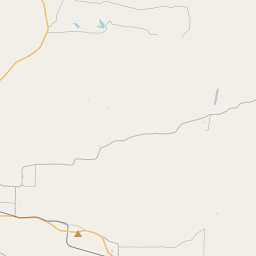Batesville During The Civil War
Historical marker location:






April 12, 1861: The Civil War begins with the Confederate attack on Fort Sumter, located in South Carolina's Charleston Harbor.
April 15, 1861: President Abraham Lincoln issues a call for 75,000 volunteers to serve in the Union Army to suppress the rebellion.
May 24, 1861: The first major land battle, known as the First Battle of Bull Run (or First Battle of Manassas), takes place in Virginia. It ends in Confederate victory.
September 17, 1862: The Battle of Antietam in Maryland becomes the bloodiest single-day battle in American history, with heavy casualties on both sides. The Union forces, commanded by General George McClellan, manage to halt Confederate General Robert E. Lee's advance into Union territory.
January 1, 1863: President Lincoln issues the Emancipation Proclamation, declaring that all slaves in Confederate-held territories are to be set free. However, the proclamation does not immediately free all slaves in the United States.
July 1-3, 1863: The Battle of Gettysburg in Pennsylvania takes place, resulting in a significant Union victory and inflicting heavy casualties on Confederate forces. It marks a turning point in the war.
November 19, 1863: President Lincoln delivers the Gettysburg Address, emphasizing the principles of liberty, equality, and the preservation of the Union.
April 9, 1865: General Robert E. Lee surrenders to Union General Ulysses S. Grant at Appomattox Court House in Virginia, effectively ending the Civil War.
April 14, 1865: President Lincoln is assassinated by John Wilkes Booth while attending a play at Ford's Theatre in Washington, D.C.
May 10, 1865: Confederate President Jefferson Davis is captured, signaling the collapse of the Confederate government.
December 6, 1865: The Thirteenth Amendment to the United States Constitution is ratified, officially abolishing slavery throughout the country.
While this timeline provides an overview of key events, it is important to note that the Civil War spanned over four years, from 1861 to 1865, and encompassed numerous battles, campaigns, and political developments that shaped the course of American history.
The Arkansas State Capitol, located in Little Rock, was completed in 1915 and is notable for its Beaux-Arts architecture and gold-plated dome. The building houses the offices of the Governor and the Arkansas General Assembly, and is open to the public for tours.
During the early years of settlement, Independence County grew rapidly, attracting pioneers and settlers, including many from Tennessee and Kentucky. The city of Batesville, which would become the county seat, was founded in 1821 and served as an important hub for trade and commerce due to its location on the White River. The county's economy thrived on agriculture, with cotton being a primary crop, and sawmills playing a significant role in the local industry.
The county also played a role in the Civil War, as it was strategically positioned on the road linking Little Rock and Missouri. Batesville became a center of Union operations in Arkansas, with a number of military camps and hospitals established in the area. However, the county experienced turmoil and devastation during the war, with several battles taking place, including the Battle of Batesville in 1864.
Following the Civil War, Independence County prospered once again, with the construction of railroads, which boosted trade and transportation. The county's economy diversified, with the emergence of manufacturing industries and the growth of educational institutions. Today, Independence County continues to thrive, with a diverse economy and a rich history that is still celebrated and preserved through its historic landmarks and museums.
Independence County Timeline
This timeline provides a condensed summary of the historical journey of Independence County, Arkansas.
- 1818: Independence County is established as an original county of the Arkansas Territory.
- 1827: Batesville is established as the county seat and becomes the oldest city in Arkansas.
- 1833: The first post office is established in Batesville.
- 1862-1865: Independence County is heavily affected by the Civil War, with the Battle of Batesville occurring in 1864.
- 1873: Lyon College (originally known as Arkansas College) is founded in Batesville.
- 1899: The White River Bridge, connecting Batesville to the southern communities, is completed.
- 1922: The first hospital, Batesville General Hospital (now known as White River Medical Center), is established in Batesville.
- 1936-1938: The construction of the Norfork Dam creates the Norfork Lake, providing recreational opportunities for Independence County.
- 1940s: The military training facility, Camp Quapaw, is established near Batesville during World War II.
- 1953: The University of Arkansas Community College at Batesville is established.
- 1962: The Dr. Norman E. McLeod House, now listed on the National Register of Historic Places, is constructed in Batesville.
- 1984: Independence County Historical Society is founded to preserve the county's history.